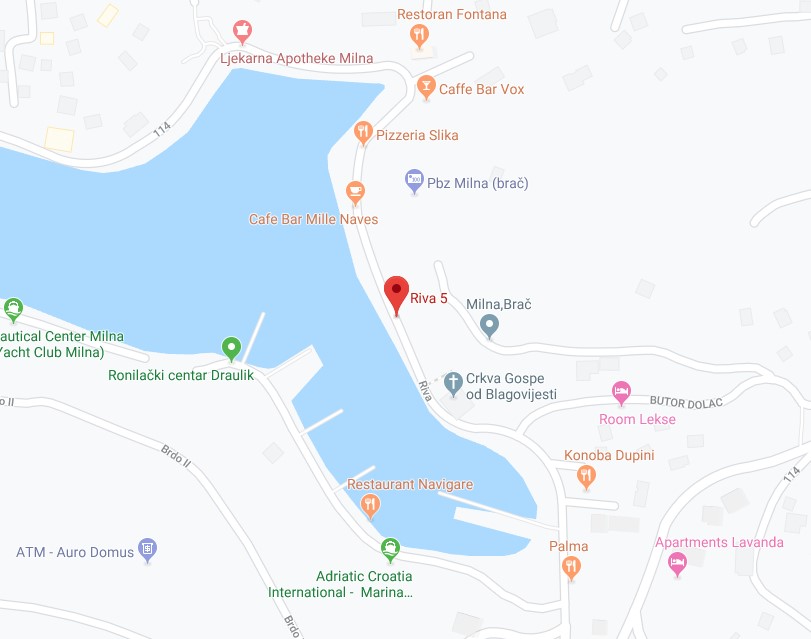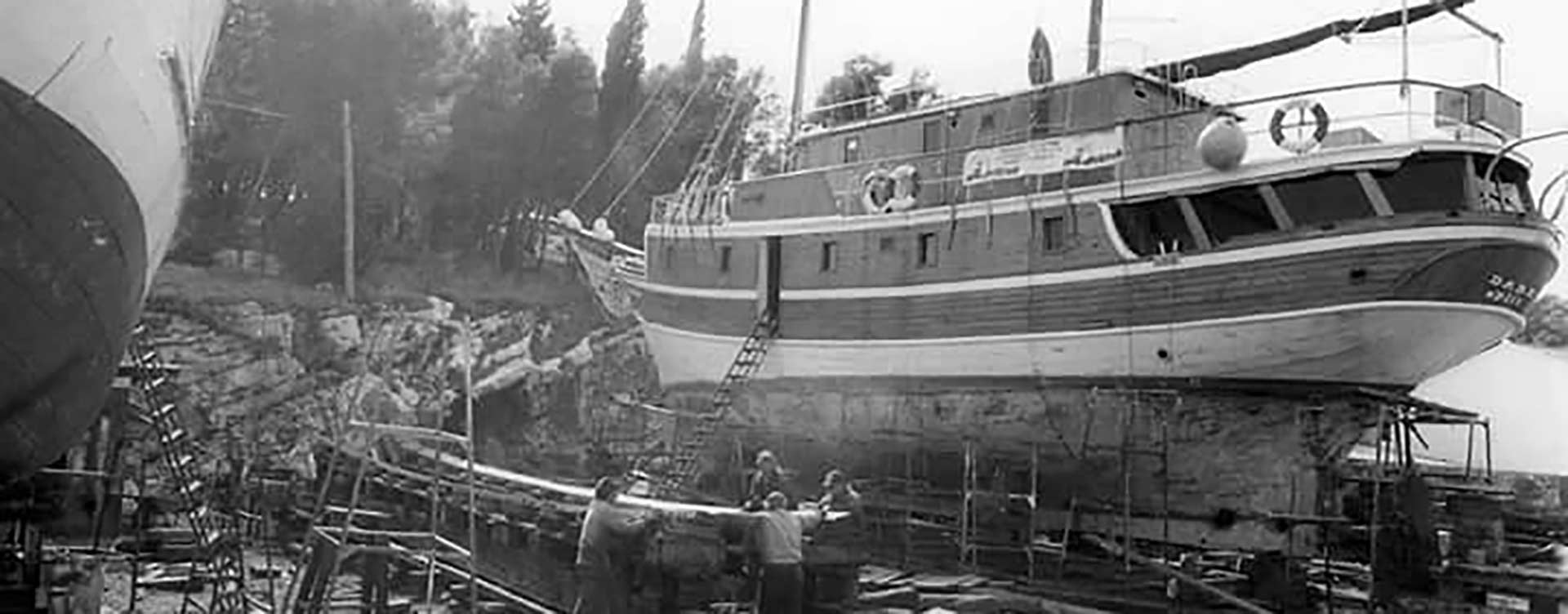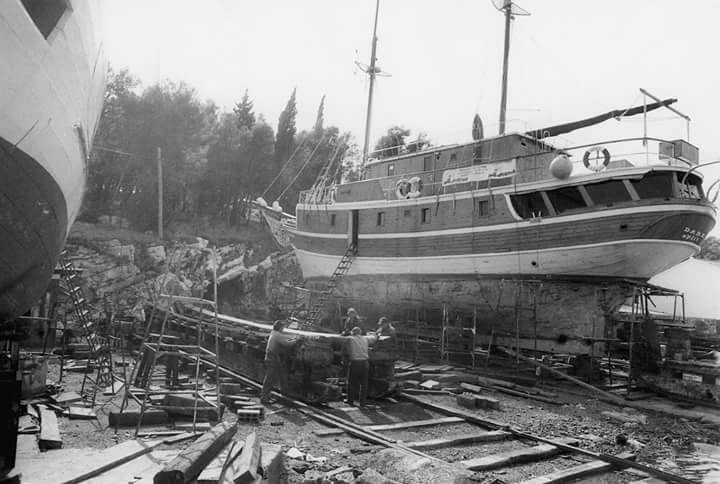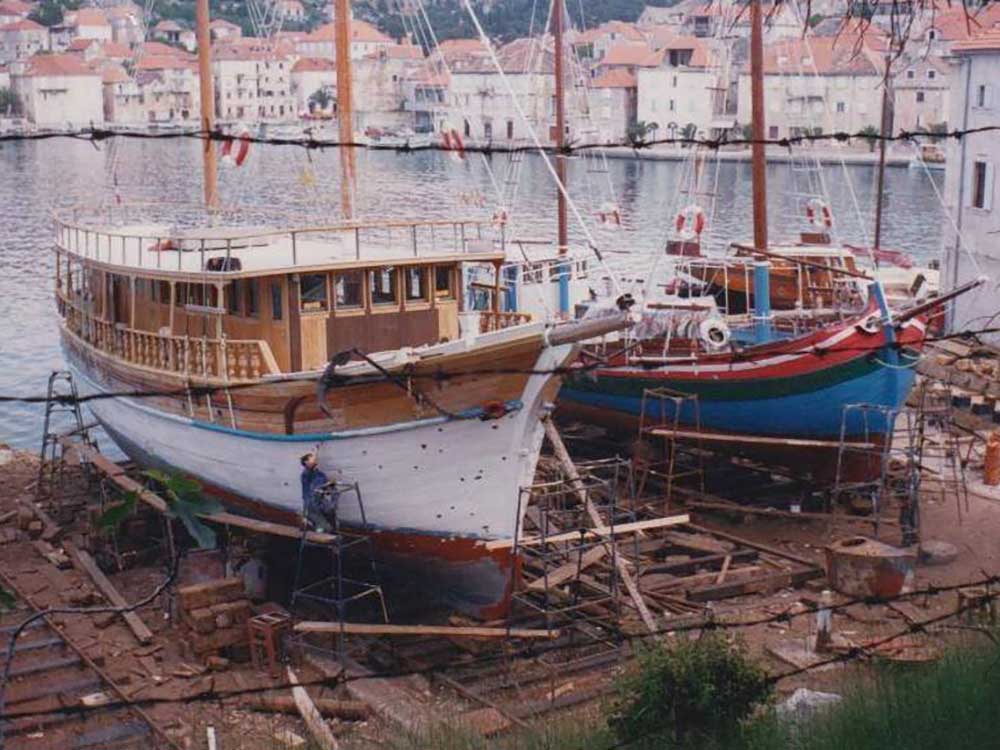Old Shipyard
Milna has left a significant mark on the shipbuilding history of the Adriatic region. The Golden Era of Milna was relatively short, compared to other shipbuilding towns, as most of the sail boats here were built during a twenty year period. Milna had two shipyards in the 18th century and one of them belonged to the Bonačić-Protti family. It was opened in 1750, in the Pantera area, later known as “Škver”, Dalmatian word for shipyard.
Some 20 years later, shipyard of the Dorić family was established in the Vlaška bay. At the turn of the century it was moved to the Milna harbor, more precisely to the area called Brdo. The Dorić Brothers Workshop served as the basis for the development of today’s Milna shipyard, established on June 26th, 1961, under the auspices of the then Milna Agricultural Cooperative.
The Bonačić-Protti shipyard was highly productive – by 1888 it produced 23 large sail boats, and as many as 5 were commissioned by local owners. The ships varied in carrying capacity and mast height. These various typese were called: Bracera, Trabakul, Loger, Škuna, Stela, Kuzer, Leut, LajaSvičarica, Guc, Kajići, Gondola.
When a ship was built, the priest was called to bless it, and then festivities were held. The ship was decorated, a flag was put on it, and one wreath was put on the bow and stern. A bottle of “prošek” dessert wine was ceremoniously broken over the bow and the ship was thereby christened. Then they dropped it into the sea, and after that a feast was held at the shipyard.
The timber used to build the ships was chopped only in the period between feast days of Our Lady of Mount Carmel and the Assumption of Mary. The fishermen were also very superstitious. If they happened to run into a woman with a limp on their way to the boat, they would return home and skip fishing, as that was considered to bring bad luck.
In the hundred years that followed, approximately one hundred ships, almost exclusively pulaks, and some braceras and trabakuls, with an average carrying capacity of 35 tons, were built in the shipyards of Milna. The construction of larger ships was particularly growing in the mid-19th century, only to practically disappear shortly thereafter. With the decline of sailboats and sailing, the Milna turned to fishing.












